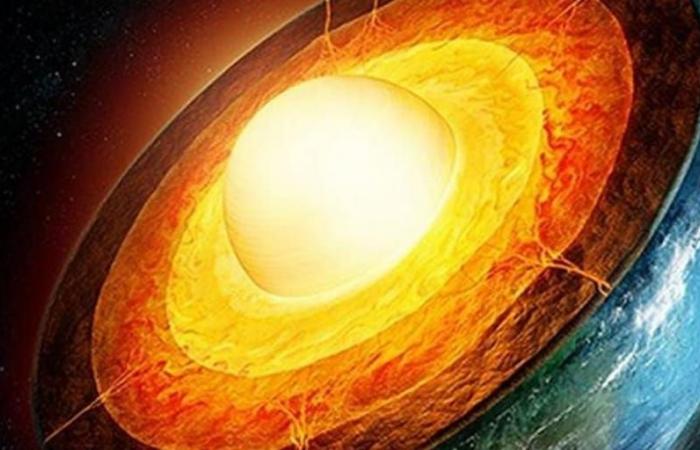The movement of the Earth’s inner core, a solid sphere of iron and nickel the size of the Moon located more than 4,800 km below the surface, has been the subject of debate in the scientific community for two decades. Some … Researchers have argued that the speed of the core had slowed, although it was still spinning faster than the surface. A new study from the University of Southern California (USC) has found a change in that dynamic. The core slows down, yes, but so much so that it is already moving slower than the Earth’s surface. The phenomenon, they say in the magazine ‘Nature’, began around 2010 and is the first time it has happened in forty years. The changes could alter the length of the day by fractions of a second.
“When I first saw the seismograms hinting at this change, I was perplexed,” acknowledges John Vidale, senior professor of Earth Sciences at USC. “But when we found two dozen more observations that pointed to the same pattern, the result was inescapable. The inner core had slowed down for the first time in many decades. “Other scientists have recently defended similar and different models, but our latest study provides the most convincing resolution,” says the researcher.
The authors believe the inner core is inverting and receding relative to the planet’s surface because it is moving slightly slower rather than faster than Earth’s mantle for the first time in about 40 years. Relative to its speed in previous decades, the inner core is slowing down.
The inner core, surrounded by the liquid outer core of iron and nickel, presents a challenge to researchers: it cannot be visited or seen. Scientists must use seismic waves from earthquakes to create representations of their motion.
Earthquakes and nuclear tests
Vidale and Wei Wang of the Chinese Academy of Sciences used data from repeated earthquakes, seismic events that occur at the same location, to produce identical seismograms. Thus, they compiled and analyzed seismic data recorded around the South Sandwich Islands from 121 repeat earthquakes that occurred between 1991 and 2023. They also used data from twin Soviet nuclear tests between 1971 and 1974, as well as from French and American nuclear tests.
According to Vidale, the slowdown of the inner core was caused by the churning of the surrounding liquid iron outer core, which generates the Earth’s magnetic field, as well as by the gravitational pulls of the dense regions of the overlying rocky mantle.
The implications of this change in inner core motion for the Earth’s surface can only be speculated. Vidale believes that inner core recoil can alter the length of a day by fractions of a second. Of course, “it is very difficult to notice it, on the order of a thousandth of a second,” he reassures her.
Future research by USC scientists aims to chart the trajectory of the inner core in greater detail to reveal exactly why it is changing. “The dance of the inner core could be even livelier than we know so far,” warns Vidale.






